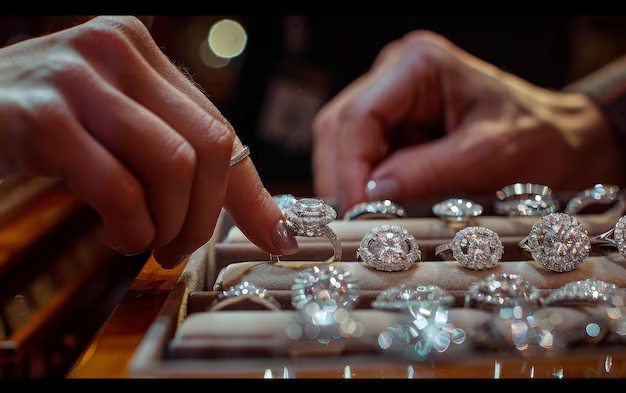Are Diamonds Really a Good Investment? Exploring the Glittering Truth
Diamonds — the word itself seems to shimmer with allure, conjuring images of romance, wealth, and glamour. Yet, behind this sparkling facade lies a more practical question for investors: are diamonds a good investment? As alluring as they might be aesthetically, it's essential to understand their worth in your investment portfolio. In this article, we'll explore this topic from various angles, providing insights that will empower you to make informed decisions about incorporating diamonds into your investment strategy.
Understanding the True Value of Diamonds
The Intrigue of Diamonds
For centuries, diamonds have been celebrated as symbols of luxury and eternal love. Their appeal is undeniable. Still, assessing their value from an investment perspective requires a more critical eye. Those lured by the sheer beauty of these stones should pause to ask: what exactly drives their value?
Factors Influencing Diamond Prices
The value of a diamond hinges on the famous "Four Cs": Cut, Color, Clarity, and Carat weight.
- Cut: A well-cut diamond is not only more brilliant but also more valuable.
- Color: The less color in the stone, the higher its grade and value.
- Clarity: Fewer imperfections mean a higher price.
- Carat Weight: Larger stones naturally command higher prices, but proportion, cut, and quality are key.
These factors collectively determine a diamond's market price, making each stone unique.
Diamonds vs. Traditional Investments
Historical Performance
When compared to traditional investment options like stocks, bonds, or real estate, diamonds take on a markedly different profile. Unlike gold, which is often seen as a hedge against inflation and market volatility, diamonds don't have a consistent track record of appreciating in value over time. While they possess intrinsic beauty, their market is less transparent and liquid than other investments.
Liquidity and Market Dynamics
In the realm of investment, the ability to quickly buy or sell an asset is crucial. Diamonds, although valuable, lack the liquidity of more traditional assets. The intricacy of pricing — driven by individual characteristics of each stone — makes them more complex and challenging to sell at market value. This feature can hinder their practicality as a quick-return investment option.
Investment Strategies: To Invest or Not to Invest?
Pros of Investing in Diamonds
- Portable Wealth: Diamonds are a compact store of value, easier to transport than other assets.
- Aesthetic and Sentimental Value: They offer intangible benefits through their beauty and the joy they can bring.
- Diversification: For those with a varied portfolio, diamonds can provide an alternative asset type.
Cons of Investing in Diamonds
- Volatility and Illiquidity: Their market is small and prone to volatile price fluctuations.
- High Transaction Costs: Commissions and appraisal fees can cut into returns.
- Limited Price Appreciation: Unlike other investments, diamonds haven't shown consistent long-term appreciation.
Navigating the Diamond Market
Buying Smart: What to Look For
When considering diamonds as an investment, prioritizing quality over quantity is key. Here are some practical tips:
- Focus on the Four Cs: Opt for the highest quality your budget allows, particularly emphasizing cut and clarity.
- Seek Certification: Always require a certification from reputable gemological institutes, providing authenticity and quality assurance.
- Choose Reputable Vendors: Build relationships with trusted jewelers who can offer guidance and trustworthy appraisals.
Selling Diamonds: Challenges and Considerations
Selling diamonds requires due diligence:
- Market Timing: Prices can vary significantly with market demand.
- Independent Appraisal: Ensure fair pricing with an independent and current appraisal.
- Selling Venue: Consider the best place to sell — private auctions might fetch better prices than pawn shops.
Diamond Alternatives and Comparisons
Gold vs. Diamonds
Gold shares some symbolic similarities with diamonds but serves more as a currency, contributing to its liquidity and market stability. Unlike diamonds, gold prices are more transparent and less subjective, making it a commonly favored store of value during economic instability.
Colored Gemstones: A Colored Perspective
Colorful alternatives like sapphires and rubies have seen rising interest from investors looking for diversity in the gemstone market. They offer their own unique appeal, both aesthetically and financially. Historically, high-quality colored stones have shown stronger price performance than diamonds in some instances.
Key Takeaways: Diamonds as an Investment
Before deciding to invest in diamonds, consider these summarized insights:
- 💎 They are a luxury asset, more akin to art than a liquid investment.
- 📉 Historically, their financial returns have been inconsistent and are affected by a more opaque market.
- 🛡️ If choosing to invest, diversification and buying quality over quantity are crucial strategies.
- 📈 Alternatives like gold or other investments typically offer more stability and liquidity.
A Summary for Investors
Here's a visual breakdown of pros and cons for quick reference:
| Pros | Cons |
|---|---|
| Portable and high-perceived value | Volatile and illiquid market |
| Offers diversification | Higher transaction costs |
| Aesthetic appeal | No consistent appreciation in value |
| Unique | Complex market dynamics |
A Concluding Insight
While the allure of diamonds might shine bright for personal pleasure and luxury, their role as an investment is far less glamorous. In a world of investment options, they represent an illiquid and volatile choice, most suited for those with a passion for the gem itself and a tolerance for risk. For investors seeking stable and transparent returns, more traditional assets typically offer a clearer path to growth and wealth preservation. Whether you choose to invest in diamonds or not, the key lies in aligning with your financial goals, risk appetite, and personal satisfaction. After all, true value lies not just in tangible assets, but in the richness they bring to your life and investment portfolio.
